| Umělec 2004/2 >> Michal Moravčík Which Nationalism is Better? | Просмотр всех номеров | ||||||||||||
|
|||||||||||||
Michal Moravčík Which Nationalism is Better?Umělec 2004/201.02.2004 Ivana Moncoľová | en cs |
|||||||||||||
|
We spoke with Michal Moravčík about the series of exhibitions, entitled Internal Affairs (Vnútorné záležitosti), that he prepared in cooperation with Martin Piaček with curatorial work provided by Michaela Sečanská. It was opened in 2003 at the Buryzone gallery with SOHO project, in Ottakring, Vienna. The last Internal Affairs, exhibition, 3/Closed Society was realized by Michal Moravčík himself. Our interview addressed this last exhibition which was held at the CC Centre in Bratislava-Petržalka (March 24 to April 18). The interview is a record of a discussion in the true sense of the word, commenting on problems of power, society and the individual in Middle Europe and elsewhere. Although the interview links these Internal Affairs exhibitions, in which Moravčík investigated the Central European political context, for the published version we omitted questions on works that weren’t exhibited. Among the objects mentioned in the discussion he also exhibited a finalist of the Oskár Čepan Prize – a Slovak parallel to the Czech Jindřich Chalupecký Prize. (On June 23, 2004, the commission announced the four finalists – Tomáš Agat Blonsi, Jaroslav Kyša, Peter Maukš Voda, and Michal Moravčík, who has since won the prize.)
The series of group exhibitions that you presented with Martin Piaček was a reaction to the political phenomena and influences of political power in post-Socialist countries. Presently the countries entering the EU are trying to get rid of their “small flaws,” including nationalism, by diminishing and suppressing them. In interviews we had about your works exhibited in the CC Centre, you speak openly about the Treaty of Trianon. If I remember correctly, you spoke about this with Hungarian artists as well. I was surprised by the widespread Hungarian public opinion that Trianon was the greatest unfairness to Hungary, and yet there was an indifferent approach towards the way non-Hungarian nations felt within the Monarchy. The problem of Trianon is often viewed from one side, stereotypically. The break-up of the Monarchy is interpreted differently than, say, in our Slovak history. I think that some of the political representatives of Hungary or some Hungarian intellectuals didn’t ask themselves many critical questions about their own history, about how they could be less dominant or less confrontational in this region. In my opinion, an element remains that is too expansive, too territorial — a latent effort to regain some historic continuity, that is fixed specifically in the region of the Carpathian basin. How is the situation with us then, with Slovaks? We are too critical about our history, even self-destructive. We nourish that feeling of its non-existence. Which indeed is not true. The furniture you exhibited contained some statements by Noam Chomsky in English, which completely eludes this Central European location. In the first show of the series, Internal Affairs 1, in the Buryzone Gallery I exhibited furniture with Slovak inscriptions. Included were Chomsky’s quotations: “...there is about 80% of the population whose main task is to fulfill commands and not think. Not to take notice,” and then texts: “Appearances are deceptive,” “Are you safe?”, “The system is .... you,” – and I meant by that various complementary meanings: watching, bugging/tapping, controlling, maybe loving... The furniture was supposed to create an atmosphere of insecurity in relation to the reality we perceive. It also referred to the eavesdropping of Martin Piaček, who stuck three bugs in the gallery. The viewer could listen to the individual sound outputs from different rooms of the gallery, while unknowingly being bugged simultaneously. In general this intervention into Buryzone explored the theme of loss of privacy as a phenomena we often live with today. It concerned a certain readability of the context (the affairs of tapping which occured at that time in Slovakia – e.g. the case of the tapping of Pavol Rusko), and therefore the Slovak language was used. For the exhibition in Vienna I used the “globalizational” English language so that people would understand. These subjects are not very popular in Slovakia, and the artists who work with visual works reflect on them very rarely. In the younger generation of Slovak visual artists – except for Eva Filová and Martin Piaček – hardly anyone aimed at the reflection of political power. In your installations you use old furniture on which you pose these “provocative/ alarming” slogans. Often the furniture is not in an original usable state, you destroy it, change it, re-do it... The whole conception of the exhibition was internally thought-out but I wonder why you use such a materially anchored thing as furniture. The ideas, slogans and thoughts that you use can surely exist in the gallery or public space in itself. Furniture has its own, private “story,” and that is why I used it as vehicle/medium of information. But there is also another level to the statement. In the exhibition I used a screen, which sets an atmosphere of dressing. It opens the level of a change of ideas or covering up, hiding from something. Or a destroyed base of a wardrobe (Lebensraum) or a shoe box, where I put an inscription about nationalism: “Which nationalism is better?” Furniture has its code, it is linked with the home. It is also a thing that persists in our everyday life but often is not perceived consciously, and there I find a similarity with ideas. The used sentences which crossed my mind are a statement of given themes. The collision of the furniture and text is to me an interesting articulation of two code-readings, together they create a new code. In your works you also pursue Socialist aesthetics. It wasn’t that clear in this exhibition, but the exhibited furniture you adapted dates back to the 70’s. Is that the thing which links it to the Central European post-Socialist context? I preoccupied myself with the recycling of Socialist aesthetics chiefly in my previous works, e.g. in the environment of K.A.R.O.L.. Instead, I attempt to give the used things life, a story, various “layers.” In connection with the inscriptions about the new, open society, I offer an ideological allusion to the fact that the real open society often – as it concerns nationalism – brings old things in a new wrapping. I want to point out to the viewer that even into the system of the open society, different things can be “smuggled.” They are just put in a different light with their real intent disguised. The strategy of power is clad in blue with yellow stars, appropriate rhetoric is chosen and suddenly it is passable. I think that Europe is still full of nationalisms — in both the West and in our “block,” but it has different names. It is more sophisticated and has shifted into economics. It may sound funny, but we find the interests of Poland in Lithuania or Ukraine, and we hear things about greater Albania... Can you explain your intention of the furniture installation “interrogation table,” covered by Chomsky’s quotation: “You must be able to say something during the break between two commercials, or in 60 words.” This is my reaction to the problem of the “internal enemy.” The table divides the space: on one side is the interrogator and on the other the enemy. It is supposed to express the thought that there is someone “behind” and someone “against.” We have to take the installation of the interrogation table and two chairs as information, a social equation with references, that still works. In the world a certain principle functions, be it under Communism or in open society, the Stb (Czech secret police) or Sis (Slovak Information Service), and society can always be manipulated. The actual theme is the threat of terrorism. Anyone can be labeled a terrorist. One of the references of the table is that once you are marked “anti...” You can never get rid of that. On the ready-made object, the curtain cornice, you used an inscription: “Intellectuals are very skilled liars.” The French philosopher Bourdieu says in his book (Pierre Bourdieu: O televizi, nakl. Doplněk, Praha 2002) that intellectuals are inapplicable for the media and some of them deliberately don’t give any interviews or don’t appear in the media. In my opinion this is not true. There doesn’t have to be a place on TV where the intellectual “makes an exhibition of himself.” Read Domino fórum (a Slovak parallel of the weekly Respekt magazine in the Czech Republic). Social views can even be reconstructed through written text. But this works even through humor, such as in the program Sedem s.r.o., where an adored intellectual and adored actor set trends with bon mots about social choice and taste. There are three policical scientists in Slovakia who express themselves on worldly and political themes; we can see the same faces appearing in the media again and again. They present information that guides society in a certain direction. After all, it is Chomsky again, who said that there are only 20% of people who work with a given opinion and don’t take it descriptively, and are able to think independently and not just obey orders. Are you a Euro-skeptic? I think that the sincerity of the West is to a certain extent measured by the interests of power and economy (we have seen the “sincere” euro-politics exercized in the Balkan conflict). Europe, which we adored so much fifteen years ago, is suddenly different and the position of Slovakia in it will be unequal. In, fact there was no other possibility but to enter the EU. This was set long ago, otherwise we would end up in undesired isolation, but it is questionable whether the chaos that EU entry brought had to come only now. It is not only about the seeming utilization of the open market with competition nearly destroyed, but also a possible use of the element of chaos, which sprung up during integration. When society is in chaos, bigger changes (which needn’t be beneficial) come quicker and rules and laws become more pliable than they would be in an organized society. Let’s get back to your exhibition at the CC Centre. Could you comment on the photograph of the corpse lying in front of the exhibition room? The poster, I’m hungry, that was installed at the entrance is of a dead body with an accompanying label with an anti-Trianon chauvinistic slogan in Hungarian: NEM! NEM! SOHA! Which means NO! NO! NEVER! (questioning the validity of the Treaty of Trianon). The slogan still has quite a few sympathizers. The question of “reunification of the nation” is one of the fundamental pre-election themes in Hungary. I wanted to show that the idea of eternal return to the life of “zombies,” of the ideals of the Great Hungary, is still here. At the same time I wanted visitors of the gallery to “trample on” the image, thereby shifting it in a way that this “zombie” deserves. And what about that Central European teaching aid that was in the middle of the room? In the middle of that wardrobe were carved maps of Hungary and the Greater Hungary. I don’t want to give the impression of an extremist, so I want to make it clear that all the works in the exhibition seek to address a much wider context than the Slovak-Hungarian, although two of them were created as a commentary on the Slovak-Hungarian problem. The exhibition was not directed pettily against Hungarians, but against the problem of nationalism in itself. In the shoe box with the text “Which nationalism is better?” I ask the viewer that question. Hypothetically, we can ask about a French one, an American or perhaps a Slovak? Of course it is an absurd question, because not one of them is good, but in the reality of the particular politics, a certain criterion seems to function — some “sacred wholesomeness.” The Central European teaching aid is a direct reaction to the last visit of former Hungarian Prime Minister Viktor Orbán to Slovakia. Maps of Greater Hungary were sold at his meetings. There was always that well-known inscription, “Viktor, Felvidék (Upper Hungary) is with you.” Orbán himself stressed, “We are in a period of transition, when the ghost of Hungarian consciousness and self-confidence seeks the unification of a nation transcending present borders.”1 As this example shows, some Hungarian politicians unnaturally stake a claim to a dominant position in this region and hardly anyone reproves them for that. I was looking for a way to react to it and the thought of a sticker, as well as the problem of the maps, seemed fitting. It reminds me of the Lebensraum which Hitler boasted about when he wanted more space for the Germans. Astounding is that nobody is recalcitrant about it, and even the democrat, Helmut Kohl, personally supported Orbán before the elections. I think that in any case you confirmed at the exhibition of the finalists of the prize your interest in the wider context of Central-European post-colonial thoughts and an interest in the influence and the power of the political system. You perfectly pictured that in the installation created for the Gallery of the City of Bratislava, where you substituted the wooden toilet doors with transparent plexiglas ones. You are always trying to catch the viewer, to manipulate him into something. The viewers often understand this as a children’s game — it amuses them. But your context has a parallel in the political system and that is not so funny... Do you think that the viewer can understand the wider context of your objects? The intervention into the space of the toilets in the gallery is in its way an allegory of the system we live in. In the premises of the gallery one is controlled, monitored. The toilets are the only place where you still have some intimacy, privacy. I took this privacy from them with the help of the plastic door, I wanted them to personally experience the removal of that privacy. I can sum it up – in the furniture installations I offer the viewer sentences, which should inspire thought, but one doesn’t have to take the information so personally, because it needn’t be of any concern. But with the direct confrontation of privacy removed one must respond – something begins to vex. I don’t want to be descriptive or didactic so I try to create universal things that can be read on different levels. This intervention tempted me to work with the space of the gallery. As for the readability or children’s game, I think this can be amusing only until you have to use the toilet. The political scene in Slovakia after the revolution was polarized, black and white. It divided people, even families, into two camps. I think that common people are not actively interested in politics anymore. Recently we witnessed at the awards artists using aesthetic strategies in art (investigation of the high – low, pop-culture...). The viewers have quickly stopped being interested by politics. What can we do next with such art? The division into two or more begrudging groups is in my opinion a generational problem, and a classical post-Socialist syndrome. The documentary of Marek Kuboš, Just slighly propagandistic (Taká malá propaganda), talks about what the system was like for most of the 90’s, under V. Mečiar, revealing the manipulation by Slovak TV. There, a person from the direction openly mocks people for accepting the nonsense from the media he served them. I wanted to have a clear comment on my critical furniture that I don’t agree with the manipulation from that time (and that is why we screened this film at the opening in the CC Centre), or any manipulation at all. People are less and less interested in politics, thanks to the politicians themselves, and at the same time this is the only way to change things. Politics can stop being interesting for people as a theme of art, I admit, but my aim is to bring it back into social circulation and to get people to think critically about things happening around them. I am repeating myself, but I am trying to address timeless problems and I am afraid that these are still going to be here in a century. Notes: 1. The daily Sme newspaper, March 6, 2004
01.02.2004
Рекомендуемые статьи
|
|||||||||||||
|
04.02.2020 10:17
Letošní 50. ročník Art Basel přilákal celkem 93 000 návštěvníků a sběratelů z 80 zemí světa. 290 prémiových galerií představilo umělecká díla od počátku 20. století až po současnost. Hlavní sektor přehlídky, tradičně v prvním patře výstavního prostoru, představil 232 předních galerií z celého světa nabízející umění nejvyšší kvality. Veletrh ukázal vzestupný trend prodeje prostřednictvím galerií jak soukromým sbírkám, tak i institucím. Kromě hlavního veletrhu stály za návštěvu i ty přidružené: Volta, Liste a Photo Basel, k tomu doprovodné programy a výstavy v místních institucích, které kvalitou daleko přesahují hranice města tj. Kunsthalle Basel, Kunstmuseum, Tinguely muzeum nebo Fondation Beyeler.
|







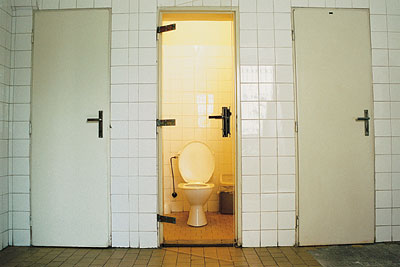




















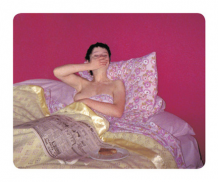




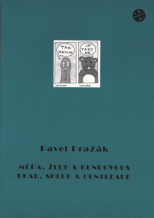
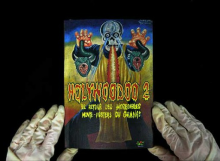
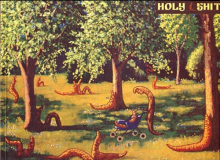
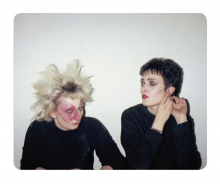


 New book by I.M.Jirous in English at our online bookshop.
New book by I.M.Jirous in English at our online bookshop.
Комментарии
Статья не была прокомментированаДобавить новый комментарий